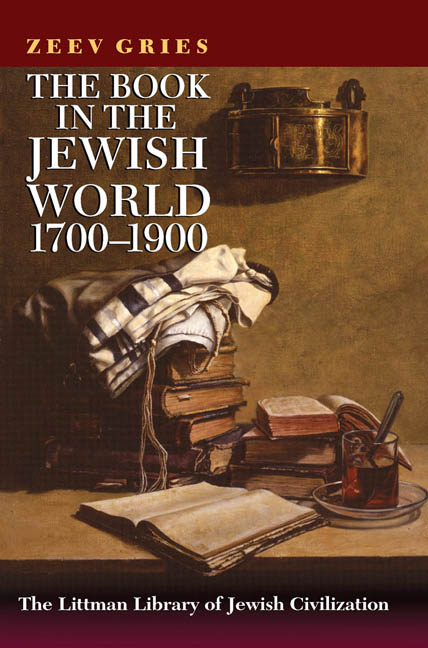Book contents
- Frontmatter
- Dedication
- Preface to the English Edition
- Contents
- List of Illustrations
- Note on Bibliographical Conventions and Transliteration
- Introduction
- PART I THE AWAKENING OF THE NASCENT INTELLIGENTSIA
- PART II THE BOOK: GUARDIAN OF THE SACRED OR HERALD OF SECULARIZATION?
- Afterword: The Revolution in the World of Hebrew Books at the Start of the Twentieth Century
- Appendix: The Young Abraham Ya'ari
- Bibliography
- Index of Books and Periodicals
- Index of Places
- Index of People
- Index of Subjects
Introduction
- Frontmatter
- Dedication
- Preface to the English Edition
- Contents
- List of Illustrations
- Note on Bibliographical Conventions and Transliteration
- Introduction
- PART I THE AWAKENING OF THE NASCENT INTELLIGENTSIA
- PART II THE BOOK: GUARDIAN OF THE SACRED OR HERALD OF SECULARIZATION?
- Afterword: The Revolution in the World of Hebrew Books at the Start of the Twentieth Century
- Appendix: The Young Abraham Ya'ari
- Bibliography
- Index of Books and Periodicals
- Index of Places
- Index of People
- Index of Subjects
Summary
THE BURGEONING INTEREST in cultural history, in Europe and elsewhere, in the last part of the twentieth century has prompted an increasing number of scholars to turn their attention from detailed discussions of beliefs and opinions to consider the history of the manuscripts and books that shaped ideas in times gone by and to examine their dissemination and readership. Their research has covered an impressive array of topics, from the makers of books—the typesetters, proof-readers, printers, and type-casters, and those who illustrated them with woodcuts, copper prints, and lithographs—to those involved in their publication and circulation: those who financed the printing, the booksellers and pedlars who distributed them, and the libraries that made them available to a broader public. Related studies have examined the development of printing techniques and materials as a reflection of shifting cultural patterns.
Scholars of Jewish history and culture have also begun in recent years to engage in this type of research (which in the past was regarded as suitable only for librarians and bibliographers), but it is true to say that the study of the book in the Jewish world is still in its infancy, and much work remains to be done.To this day there is still no comprehensive list of all of the cities in which Hebrew books were printed, nor do we know the names of the printers, editors, and others who worked on the books. Not even the National and University Library in Jerusalem has compiled such a list, even though more than half a century has passed since the Hebrew Bibliography Project was initiated in 1950 to register all the Hebrew books in its collection (which is the largest in the world).This situation is due to the fact that from the beginnings of the Wissenschaft des Judentums movement in the 1810s and 1820s until quite recently, the history of the transition from manuscript to print was considered a rather tedious field of Jewish history, best left to bibliographers; proper historians dealt with the larger issues of Jewish history that were perceived as more appropriate to the modern era. The history of the book in the Jewish world was not perceived as a pressing issue.
- Type
- Chapter
- Information
- The Book in the Jewish World, 1700–1900 , pp. 1 - 10Publisher: Liverpool University PressPrint publication year: 2007

